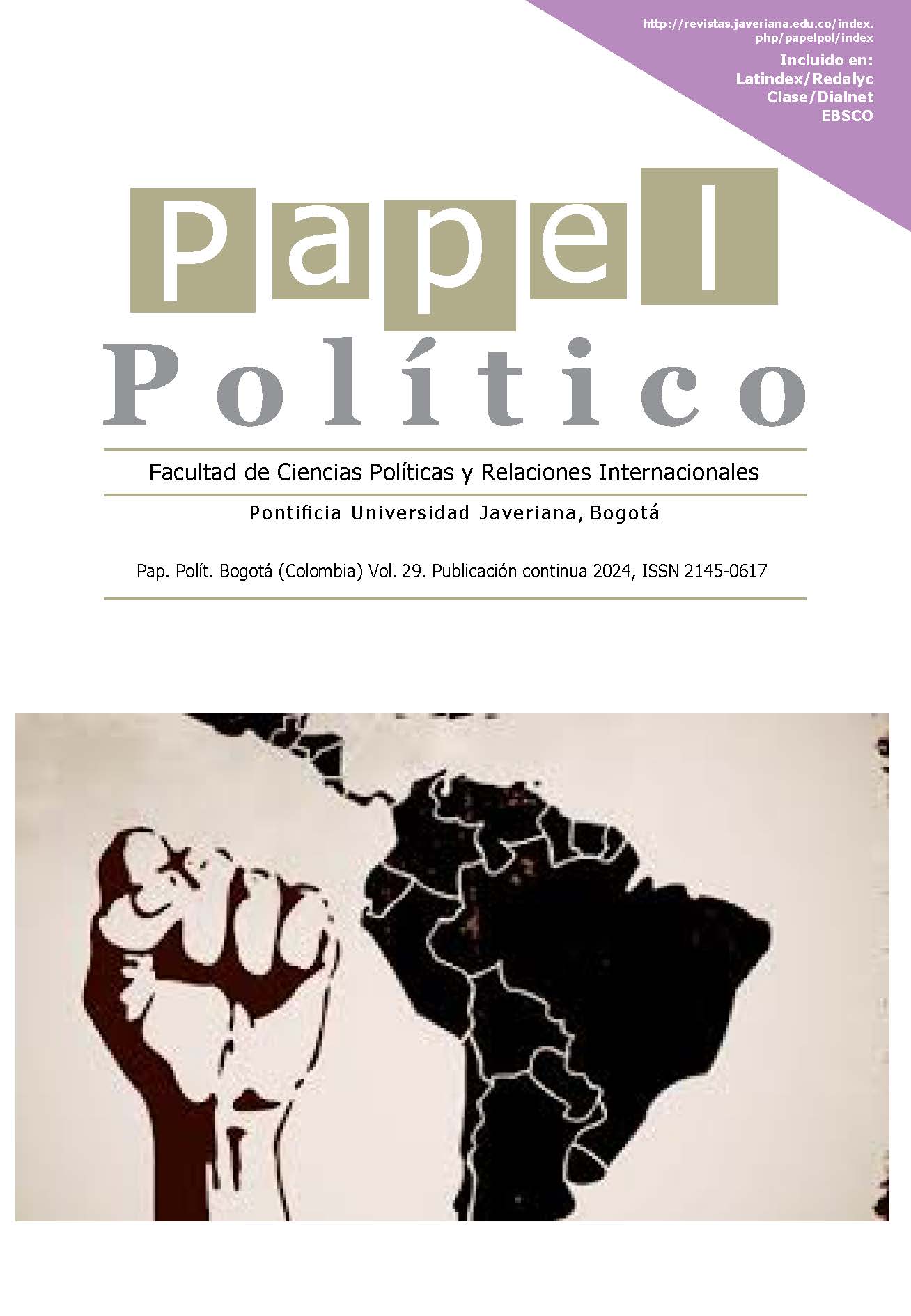Resumen
Among peace-dividends, ex-combatants expect better living conditions than during war. However, do ex-combatants that return to civilian life have similar living conditions than average population? This case study on Colombia, analyses the living conditions of ex-combatants compared to the country’s average population by using a mixed methods approach. This research combines data from 2018 to 2020 of the reintegration program, the national household survey and police data to compare ex-combatants and average citizens using the Sustainable Development Goals (SDG). The findings show to what extent can reintegration outcomes be a positive peace dividend that contributes to development in post-conflict transitions.
Banholzer, L. (2014). When do Disarmament, Demobilisation and Reintegration Programmes Succeed? Dt. Inst. für Entwicklungspolitik.
Bowd, R. & Özerdem, A. (2013). How to Assess Social Reintegration of Ex-Combatants. Journal of Intervention and Statebuilding, 7(4), 453-475. http://doi.org/10.1080/17502977.2012.727537
Collier, P. , Elliott, L., Hegre, H., Hoeffler, A., Reynal-Querol, M. & Sambanis, N. (2003). Breaking the Conflict Trap: Civil War and Development Policy. World Bank; Oxford University Press.
Conoir, Y. (2011). Evaluation du Programme National de Désarmement, Démobilisation et Réintégration en RDC (PNDDR). Unité D’ Execution du Programme National de Desarmement, Demobilisation et Reinsertion (UEPN-DDR).
Dudouet, V. (2011). Sociologie des politiques de DDR: Analyse des processus de coproduction. Université Paris 1.
Edloe, L. L. (2007). Best Practices for Successful Disarmament, Demobilization, and Reintegration (DDR). Spring.
Guzmán, Fals Borda, O. & Umaña Luna, E. (2016). La violencia en Colombia. Taurus.
Herrera, D. & González, P. (2013). Estado del arte del DDR en Colombia frente a los estándares internacionales en DDR (IDDRS). Colombia Internacional, (77), 273-302. http://doi.org/10.7440/colombiaint77.2013.10
Hettne, B. (1983). Peace and Development Contradictions and Compatibilities. Journal of Peace Research, 20(4), 329-342. https://doi.org/10.1177/002234338302000404
Hettne, B. (2010). Development and Security: Origins and Future. Security Dialogue, 41(1), 31-52. http://doi.org/10.1177/0967010609357040
Humphreys, M. & Weinstein, J. M. (2005). Disentangling the Determinants of Successful Disarmament, Demobilization, and Reintegration. Center for Global Development. https://www.cgdev.org/sites/default/files/4155_file_WP_69_0.pdf
IAWG on DDR. (2006). Integrated Disarmament, Demobilization and Reintegration Standards (IDDRS). United Nations (UN).
Kingma, K. & Muggah, R. (2009). Critical Issues in DDR: Context, Indicators, Targeting, and Challenges. In Background paper for the International Congress on Disarmament, Demobilization and Reintegration. Alta Consejería para la Reintegración.
Lamb, G. (2013). DDR 20 Years Later : Historical REview of the Long-term Impact of Post-independence DDR in Southern Africa. Trans-Divisional Research Program (TDRP); World Bank.
McMullin, J. R. (2013). Ex-Combatants and the Post-Conflict State. Palgrave Macmillan. http://link.springer.com/10.1057/9781137312938
Milante, G. & Oxhorn, P. (2009). No Development without Peace. Development Outreach, 11(2), 20-22. https://hdl.handle.net/10986/4582
Molloy, D. (2008). Evaluation Report UNDP DDR Program in Somalia. https://erc.undp.org/evaluation/documents/download/2051
Munive, J. & Finn, S. (2015). Rethinking Disarmament, Demobilization and Reintegration Programs. Stability: International Journal of Security & Development, 4(1), 1-13.
Nakamitsu, I. (2018). Advancing Disarmament within the 2030 Agenda for Sustainable Development. United Nations (UN). https://www.un.org/en/chronicle/article/advancing-disarmament-within-2030-agenda-sustainable-development
Pardo, R. (2013). La historia de las guerras. Penguin Random House.
Seethaler, F. (2016). Assessing the Impact of DDR Programmes: Possibilities and Challenges. United Nations University. https://collections.unu.edu/eserv/UNU:5546/Assessing_Impact_of_DDR_Programmes_160322.pdf
Sen, A. (2008). Violence, Identity and Poverty. Journal of Peace Research, 45(1), 5-15. http://doi.org/10.1177/0022343307084920
Solberg, E. (2015). From MDGs to SDGs: The Political Value of Common Global Goals. Harvard International Review, 37(1), 58-61.
Spear, J. (2006). From Political Economies of War to Political Economies of Peace: The Contribution of DDR after Wars of Predation. Contemporary Security Policy, 27(1), 168-189. http://doi.org/10.1080/13523260600603402
The World Bank. (2010). MDRP Final Report: Overview of Program Achievements. Author.
Torjesen, S. (2013). Towards a Theory of Ex-Combatant Reintegration. Stability: International Journal of Security & Development, 2(3), 1-13. https://doi.org/10.5334/sta.cx
Turriago, G. & Bustamante, J. M. (2003). Estudios de los procesos de reinserción en Colombia, 1991-1998. Alfaomega.
UN Secretary General. (2011). Third Report of the Secretary General on Disarmament Demobilizatio and Reintegration. United Nations General Assembly. https://digitallibrary.un.org/record/700920/files/A_65_741-EN.pdf
Wolff, J., Witt, A., Stappenbeck, J., Schnabel, S., Peez, A., Junk, J., Coni-Zimmer, M., Christian, B., Birchinger, S. & Bethke, F. (2020). The Development-Peace Nexus: Experiences and Findings. In Peace and Development 2020: An Analysis of Recent Experiences and Findings (pp. 28-41). Peace Research Institute Frankfurt. https://www.jstor.org/stable/resrep24494.6
Zapata, M. N. (2017). Enfoques cualitativos en políticas públicas. Uso del diagnóstico rápido participativo (DRP) para el análisis de la reincidencia de personas en proceso de reintegración. In Anuario de Reintegración 2017. Third Edition (pp. 124-149). Agencia Colombiana para la Reintegración. https://www.reincorporacion.gov.co/es/la-reintegracion/centro-de-documentacion/Documentos/Anuario%20ARN%202017.pdf.

Esta obra está bajo una licencia internacional Creative Commons Atribución 4.0.
Derechos de autor 2024 Dylan Herrera, Harrison Sandoval


